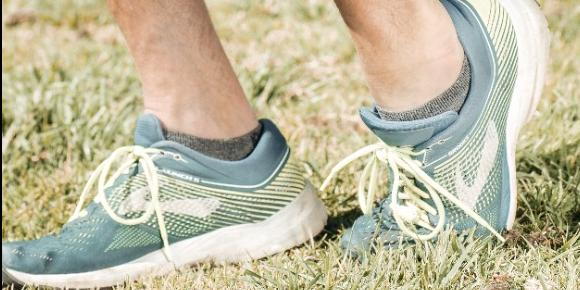Runners May Be In Great Shape, But Prone To Injuries

- posted: Apr. 05, 2012
Running injuries may impact other areas of the body as well. Because I am an extremity expert as well as a chiropractor, I am trained to look at the whole body and understand the kinetic chain. I want to identify the true source of the problem treat any malfunction in the body and develop a training or rehabilitation program to solve it.
Most common running-elated injuries are:
- Runner’s Knee:
This is the most common running-related injury. Known as patello-femoral pain, and sometimes diagnosed as chondromalacia of the patella, runner’s knee is essentially irritation of the cartilage of the kneecap. The condition results in pitting or fissuring of the cartilage to varying degrees. While running, various mechanical conditions may predispose runners to a poorly tracking kneecap.
It can result in irritation and/or damage to the kneecap. Runners will notice pain near the kneecap, especially after sitting for extended periods of time with knees bent or while walking down stairs or downhill. Appropriate treatment involves eliminating or modifying activities that cause the pain; correcting improper biomechanics that allow the injury to arise; and avoiding positions that further irritate the condition, such as sitting for prolonged periods of time. - Iliotibial Band Syndrome:
Symptoms include pain or aching on the outside of the knee, usually occurring in the middle or at the end of a run. When you flex and extend your knee, the iliotibial band, which runs along the outside of the thigh, can become irritated from repetitive rubbing over the outside of the knee.
There are several causes of this syndrome, including weak gluteal muscles, bowed legs, over-pronation of the foot, leg length discrepancy, and running on uneven surfaces. Running on a circular track may also contribute to the problem. As with other running injuries, athletes should decrease their training regimen. In addition, they should also add stretches for the outside of their thigh to their warm-up program, avoid running on uneven or circular track surfaces, and some should wear motion control running shoes. - Shin Splints:
Also called medial tibial stress syndrome, “shin splints” refers to pain occurring in either the front or inside portions of the lower leg. Tenderness extends along the length of the lower leg at either of the surfaces. Those most at risk for shin splints are beginning runners who are not yet used to the stresses of running or who have not stretched or strengthened properly. To care for shin splints, runners should decrease their training, and begin with ice and rest, later adding strengthening of their lower leg muscles. They may use swimming and biking as alternative forms of exercise. If symptoms persist, runners should consult their physicians. - Achilles Tendinitis:
The Achilles tendon is the connection between the heel and the muscles of the lower leg. Several factors contribute to the development of Achilles tendinitis, including excessive hill running, sudden increases in training, and improper shoes. One of the major factors is excessive tightness of the posterior muscles of the leg, including the calf muscles and the hamstrings. Runners with this condition should reduce their running. They can use ice and gentle stretching to reduce pain and tightness. If not treated properly, Achilles tendinitis can develop into a chronic problem. - Heel Pain (Heel Spurs and Plantar Fasciitis):
The most common heel problems are caused by strain of the plantar fascia, which extends from the heel to the toes. Strain in this tissue can become very painful, especially with the first steps of the day. The condition can cause swelling at the origin of the plantar fascia at the heel. The pain is most noticeable when the foot flattens during weight bearing or when pushing off with the toes during walking or running, and it is usually located near the heel.
The problems tend to occur in flat, flexible feet and in high arched, stiff feet. Left untreated, the pain can spread around the heel. Treatment should include a decrease in the intensity and duration of running workouts. Runners should also evaluate their running shoes for excessive wear and for proper fit. The wrong shoe for a foot type can worsen bio-mechanical flaws and cause plantar fasciitis.
Runners can take several precautions to prevent being sidelined because of an injury. While some of these steps might seem time-consuming or expensive, they are a good way to keep you on the right track.
- Prepare for exercise/activities – Understand what muscle groups will be used and slowly start conditioning them by strengthening them. Talk with a PM&R physician to determine the appropriate type of exercises.
- Properly stretch muscles before running – Muscles and joints need to warm up before beginning a run. Also be sure to allow for a “cooling down” period afterward.
- Use an appropriate running shoe – There are several brands and models of running shoes. Make sure you are using the type best suited for your feet and your running style. Running shoes should also be replaced regularly. Consult a specialty running store to choose an appropriate shoe.
- Incorporate hard days and easy days into your training program – Mileage should only be increased approximately 10 percent each week. Runners should make sure to decrease their mileage slightly every third week as a way to allow for recovery prior to additional mileage increases. Runners should also be patient with their development, being careful not to push themselves too far or too fast.
Dr. Amie Gregory, DC, CCEP, ANF is a San Francisco, CA and San Carlos, CA chiropractor that understands full body health. She works with athletes, expectant moms, office workers and everyone else in between. Contact our San Francisco, CA chiropractic office or San Carlos, CA chiropractic office today!
Location
Find us on the map - Please click desired location below
Precise Moves Chiropractic San Francisco
3150 18th Street, Suite 334
San Francisco, CA 94110, United States
24 hour Scheduling makes it easy!
(Hours may change due to doctor availability)
Hours in the mission district, San Francisco
8-12pm
Closed
3-6PM
8-12PM
3-8PM
8:00 am - 12:00 pm
Closed
